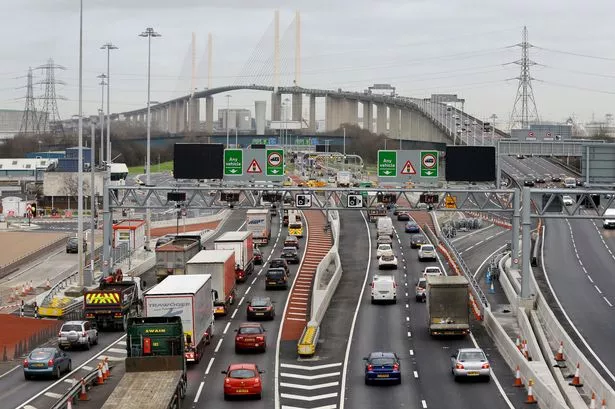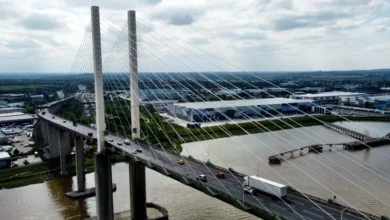Dartford Crossing Closures: What You Need to Know Before You Travel

The Dartford Crossing is one of the most vital pieces of road infrastructure in southeast England. Spanning the River Thames and connecting the counties of Kent and Essex, it serves as a crucial transport link for commuters, logistics companies, and holiday-goers alike. Officially part of the A282, the crossing comprises two tunnels and the Queen Elizabeth II Bridge, carrying tens of thousands of vehicles every day.
But while the crossing plays a central role in the UK’s road network, it is also known for something far less convenient — closures. From scheduled maintenance to unexpected incidents, Dartford Crossing closures can cause severe delays, detours, and stress for drivers who are unprepared. In this comprehensive article, we explore why these closures happen, how they affect your journey, and what you can do to stay ahead of disruptions.
Why Do Dartford Crossing Closures Occur?
To appreciate the reasons behind Dartford Crossing closures, it’s helpful to consider the complexity and age of the infrastructure. The tunnels, built in 1963 and 1980 respectively, and the bridge, completed in 1991, are engineering marvels. But like all aging infrastructure, they require regular maintenance and upgrades to remain safe and functional.
1. Routine Maintenance
Routine maintenance includes tasks such as:
- Tunnel ventilation system checks
- Road surface repairs
- Lighting replacements
- Fire safety inspections
These are typically scheduled during off-peak hours, often at night or over weekends, to minimize disruption. However, even a short overnight closure can impact shift workers, freight hauliers, and early-morning commuters.
2. Emergency Incidents
Unexpected closures are often caused by:
- Vehicle breakdowns
- Road traffic accidents
- Fires or hazardous spills
- Police incidents or security alerts
These kinds of closures can last from minutes to several hours, depending on the severity of the situation. Unfortunately, these are harder to predict and can have a ripple effect across the region’s road network.
3. Weather-Related Closures
The Queen Elizabeth II Bridge is a cable-stayed structure and, like many such bridges, is sensitive to strong winds. Wind speeds above 50 mph can trigger a full closure for safety reasons. High winds, snow, and fog have all led to Dartford Crossing closures in the past.
Impact on Commuters and Freight
Dartford Crossing closures are more than just a temporary inconvenience — they can significantly impact lives and businesses.
Traffic Congestion
When a closure occurs, traffic builds up rapidly on the M25, A2, and A13. Alternative routes like the Blackwall Tunnel or the M11 can become heavily congested as a result. What would normally be a 15-minute journey can easily stretch into two hours or more.
Business and Logistics Disruption
The crossing plays a key role in the supply chain. Delays in freight transportation mean lost revenue, missed deadlines, and increased operational costs. In some cases, perishable goods and urgent medical supplies may even be compromised.
Emotional Toll on Drivers
Beyond the economic impact, frequent Dartford Crossing closures can take a mental toll on drivers. Anxiety about getting to work on time, collecting children from school, or catching a flight can cause stress and fatigue — all of which impact driver safety and well-being.
Dartford Crossing Closures: Stay Updated, Stay Ahead
How to Check for Closure Alerts
The good news is that modern tools make it easier than ever to stay informed.
- National Highways website: Provides up-to-date closure schedules and traffic conditions.
- Social media: Twitter accounts like @HighwaysSEast and @DartCharge offer real-time updates.
- Navigation apps: Waze, Google Maps, and TomTom dynamically adjust routes based on closure alerts.
- Local news outlets: BBC Radio Kent and Essex often issue travel bulletins during peak hours.
Sign Up for Alerts
Drivers can register for text or email notifications from the Dart Charge system. These alerts are especially useful for regular commuters who need advance notice of any disruptions.
Planning for Dartford Crossing Closures
While some closures are unpredictable, many are scheduled in advance. Planning accordingly can help avoid delays and reduce stress.
1. Check Before You Drive
Make it a habit to check closure schedules before heading out — especially if traveling at night or during weekends.
2. Know Your Alternatives
Familiarize yourself with nearby crossings or detours:
- Blackwall Tunnel – Good for traffic heading into east London
- Woolwich Ferry – Free but limited capacity and operating hours
- M11 and A12 – For longer detours heading northbound
- Thames Clipper (public transport) – For those opting to avoid driving entirely
3. Adjust Your Travel Time
Leaving earlier or later than usual can sometimes help avoid the worst of the congestion caused by closures. If a full closure is announced in advance, consider rescheduling non-urgent trips.
Recent Dartford Crossing Closure Highlights
Major Works in 2024
In early 2024, extensive maintenance on the southbound tunnel caused overnight closures for over two weeks. Although these were announced well in advance, some commuters still faced delays due to inadequate signage or GPS misdirection.
Emergency Closure in May 2025
In May 2025, an overturned HGV carrying flammable materials led to an emergency closure of both northbound and southbound routes. The incident caused 8-mile tailbacks and stranded commuters for hours.
These examples highlight the importance of being informed and prepared, especially during high-traffic periods.
How the Dart Charge Fits In
It’s impossible to discuss Dartford Crossing closures without mentioning the Dart Charge — the toll system that operates between 6 a.m. and 10 p.m. daily. While the charge system itself does not directly cause closures, it plays a role in managing traffic flow.
Many users forget to pay the Dart Charge, leading to fines and further stress. During closures, signage reminding drivers to pay the charge is sometimes overlooked due to confusion, compounding the issue.
Calls for a Permanent Solution
With frequent Dartford Crossing closures affecting thousands, many have called for permanent fixes or alternatives.
Lower Thames Crossing Project
One major response is the proposed Lower Thames Crossing — a new road tunnel between Kent and Essex, east of the current crossing. This project aims to relieve pressure on the Dartford Crossing and reduce closures due to overload.
However, environmental concerns, budget debates, and planning delays have pushed the timeline further. The project may not be completed until the 2030s, leaving commuters to deal with the current setup for years to come.
Smart Technology Integration
There’s also been investment in smart road technology — such as AI-assisted traffic prediction, live camera feeds, and improved vehicle detection systems. These innovations aim to reduce the frequency and duration of closures by offering faster incident response.
Tips for a Smooth Journey
For Daily Commuters
- Save the National Highways Dartford Crossing page as a favorite on your phone
- Use a satnav that auto-updates based on traffic and closures
- Keep snacks, water, and a power bank in your car in case of long delays
For Logistics Drivers
- Coordinate with dispatchers before setting off
- Stay in communication with clients if delays are expected
- Know the closest rest stops in case of reroutes
For Occasional Users
- Plan to travel outside of rush hours
- Keep change or a credit card ready for the Dart Charge
- Bookmark closure update websites or follow relevant social accounts
Dartford Crossing Closures and You
When it comes to road travel in the southeast of England, few things are more notorious than Dartford Crossing closures. Whether caused by maintenance, emergencies, or weather, these disruptions can upend your schedule and create cascading delays across your journey.
However, with smart planning, reliable sources of information, and a flexible mindset, you can reduce the impact these closures have on your life. Make it a habit to check for updates, consider alternative routes, and adjust your travel plans when necessary.
The Dartford Crossing may not be perfect, but until long-term solutions like the Lower Thames Crossing come into play, preparation is your best tool.
FAQs
1. What times are Dartford Crossing closures most likely to occur?
Most planned closures happen overnight, between 8 p.m. and 6 a.m., often during weekends to reduce daytime disruption.
2. Is there a toll during closures?
If the crossing is closed in both directions, the Dart Charge does not apply during those periods. However, partial closures still require payment during chargeable hours.
3. Are there real-time updates available for Dartford Crossing closures?
Yes, you can get real-time updates from National Highways, Google Maps, and traffic-focused social media accounts.
4. Can I get fined if I use a detour without paying the Dart Charge?
Only vehicles that pass through the designated Dartford Crossing area during charge hours are subject to the toll. Detours outside this zone do not incur the charge.
5. Is the Lower Thames Crossing a solution to closures?
Yes, it’s intended to ease congestion and provide an alternative route, but it’s not expected to be ready before the 2030s.





